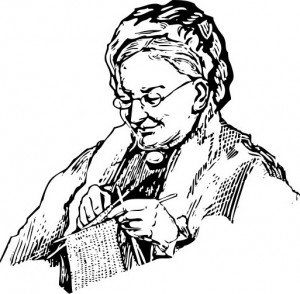Although two of the thirteen Salem women who came to Oregon on the Lausanne in 1840 died within three years, the average lived another thirty ~ most dying about 1870. By then Salem was a young city, the capital of the state. Two women, no longer living in Salem, lived another thirty years ~ until 1902 and after 1907. These survivors tell the last stories of our missionary wives.
Harriet Biddle Campbell was born in Amherst Court House, Virginia in 1817 and married when she was 18 year old. They lived for several years in Springfield, Illinois where their daughter Mary was born. After attending a lecture by Jason Lee, they became recruits for his Oregon mission, sailing from New York City on the Lausanne in 1939. The family landed at Fort Vancouver on June 1, 1840. Upon arriving at Lee’s mission near Salem, Campbell began work on the construction of the parsonage. By the winter of 1843-44 he was superintendent of the mission’s Indian school at Chemeketa. After the mission closed, the family moved to the Chehalem Valley (the present Newburg area) where he settled on a land claim and became a pastor to local Indians, preaching to them in their own languages. By 1849 they were back in Salem where he engraved the dies for the Oregon Exchange Company’s “Beaver Money.” the 1850 census shows Hamilton was once again making a living as a cabinetmaker. In addition to daughter Mary, the family now also included Maria A., nine; Gustavus (“Gus”) Davis, eight; Hariette (or Harriet) A., six; and Lydia H, three. We can imagine her life as comfortable financially (but busy with five children!), but her husband’s talents and ambitions would take soon them from Salem.
By 1854, Hamilton had established a photography studio in Corvallis, also doing engraving, watchmaking and repair of musical instruments. They also lived in Eugene and San Francisco. In 1858, they were back in Salem where a new, grander photography studio was opened. However, Salem could not hold Hamilton Campbell: he moved the family to Portland in 1862. In the next year he was superintendent of silver mine in Mexico when he was murdered by a workman. We can only imagine how Harriet maintained a living for herself and her children. She had given birth to eight by this time: Mary, Maria, Gustavus, Harriet, Lydia, Ester, Sarah and William. More grief was to follow Hamilton’s death when, in the next year, Gustavus was accidentally killed while hunting and six months later the six year old Willie died. A postscript to Harriet’s life is a report that in she was living in Portland in 1900, still “sprightly” at eighty-three. Some references give her death year as 1902.
Sarah DeBell Frost and her husband were sent to the mission at Clatsop and so briefly lived at Salem.Her husband’s ministry to the Indians was not successful, he lamented the lack of support from the church, the family’s isolation and the poor health of himself and Sarah. In 1843 the Frosts (no children have been identified) left Oregon with Daniel and Maria Lee. Rev. Frost returned to a ministry in New York.
Sarah’s story, as far as we know it, might have ended there. However, Edmond S Meany wrote that in July 1907 when he was visiting the reservations of Siouan tribes with Edward S. Curtis, photographing many of the chiefs and headmen of the Sioux, Mrs. Clark, wife of the Episcopalian missionary at Rosebud, came into camp and announced that there was a very old lady in the village who would like to meet the historian from the Oregon country.
As told by Meany, “Mrs. Curtis became interested, and so we three started for the home of Dr. E. J. De Bell, who for twenty- three years has been a physician and trader at Rosebud. In this time his aged aunt, whose maiden name was Sarah De Bell, was spending the last years of her long and eventful life.
“I am glad to meet you, friends. I cannot see you at all and 1 cannot hear a word you say unless you talk right here,” pointing a long-wasted finger to her forehead.
“Is it true, Mrs. Beggs, that you went to Oregon in an early day?”
“Did you know Jason Lee, Daniel Lee, Gustavus Hines and H. K. Perkins?”
“Yes, yes. I knew them well, and many others. Name some more of them. Did you know any of these?” More of the missionaries were named.
“,Why, then you must have known Rev. ]. H. Frost, who established the mission at Clatsop?”
“Glory be to God! He was my husband!” “What?” “Yes. You see, after we returned from Oregon, Rev. Frost died and on January 1st, 1866, I was married to Rev. Stephen R. Beggs. So I am the widow of two Methodist ministers.”
The interviewer asked questions that brought forth a flood of information and gossip about those historic days of early Oregon. The chance dropping of a word of the Chinook jargon was like an elixir. The old 1ady’s face brightened and she proceeded with a lengthy discourse in that language, though probably half a century had passed since she had heard it used. In those early days she and her husband had used the Chinook in their home at Clatsop, as well as in religious services among the natives.
Mrs. Frost was the richest woman in Oregon so far as chinaware was concerned. She had carefully packed her treasures and now proudly boasts that not a thing was broken in the long journey [to Oregon], not even the handle of the fine gravy ladle. She and Miss Maria T. Ware were chums on the voyage around the Horn. At Honolulu they bought new dresses just alike. Arriving in the Columbia River, and while waiting for assignment to their several mission stations, Rev. Daniel Lee proposed marriage to Miss Ware and was accepted. On that occasion Mrs. Frost served her friend as bridesmaid.
This suggests one of the best incidents related by the old lady at Rosebud:
“When I left the States in 1839 I had a lot of fine gowns. These were all nicely packed in a barrel. When we got out to Oregon I did not need these gowns, so I just left them in the barrel. I had a bureau, too, and a fine bonnet. Now, I did not need that bonnet in Oregon, so I put it in the bureau and left it there. When I got ready to leave Oregon I took my bonnet from the bureau and found that a skunk had gnawed a hole in the top and made a nest in my bonnet. I was a good milliner. I say it, but I really was a good milliner. So I just put a fine bow of ribbon over that hole made by the skunk and had a good bonnet again. As we drew near Boston I had that barrel of gowns opened and selected the best one there. As my husband and I walked down the gangplank and along the streets folks turned around and stared at us, and they fairly snickered as we entered a missionary meeting. You see, when I left for Oregon the style was short gowns with low neck and short sleeves, and I guess the style must have changed considerably before I got back and opened that barrel again. But, do you know, my husband and I did not care a bit for their stares or their snickers.”
One reason for the sensation she caused was shown by a picture of Mrs. Beggs when she was fifty-six years old. She was then tall, plump and commanding in appearance with a beautiful and intellectual face. Boston must have been pleased at that Rip Van Winkle apparition from the Far West.
“I don’t know how many more days there are for me in this world, but one thing is sure, you have brought a glad hour that I will not forget. Nika tiki closh tumtum copa mika (I have a good heart toward you).”

